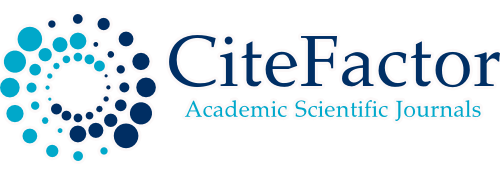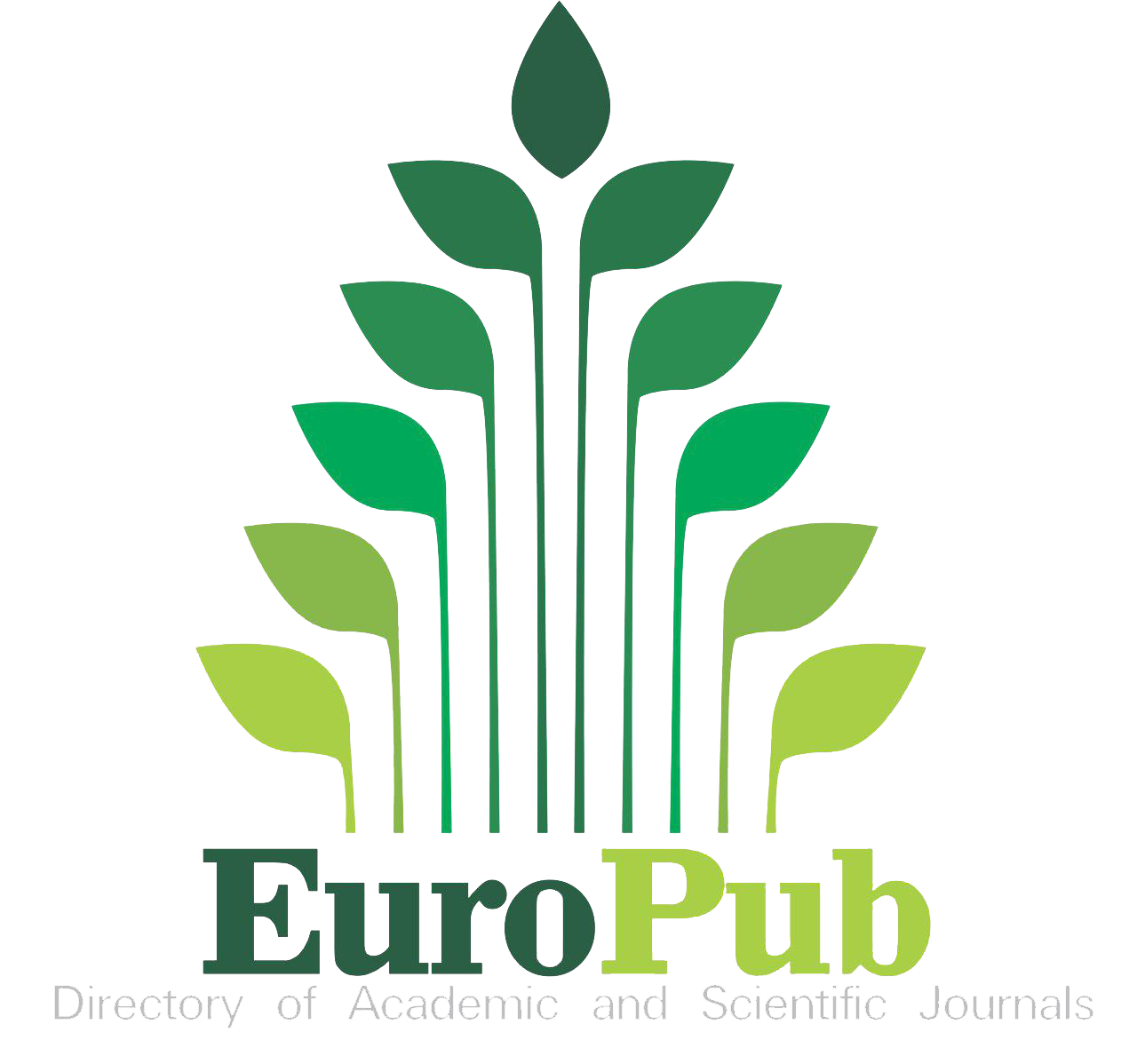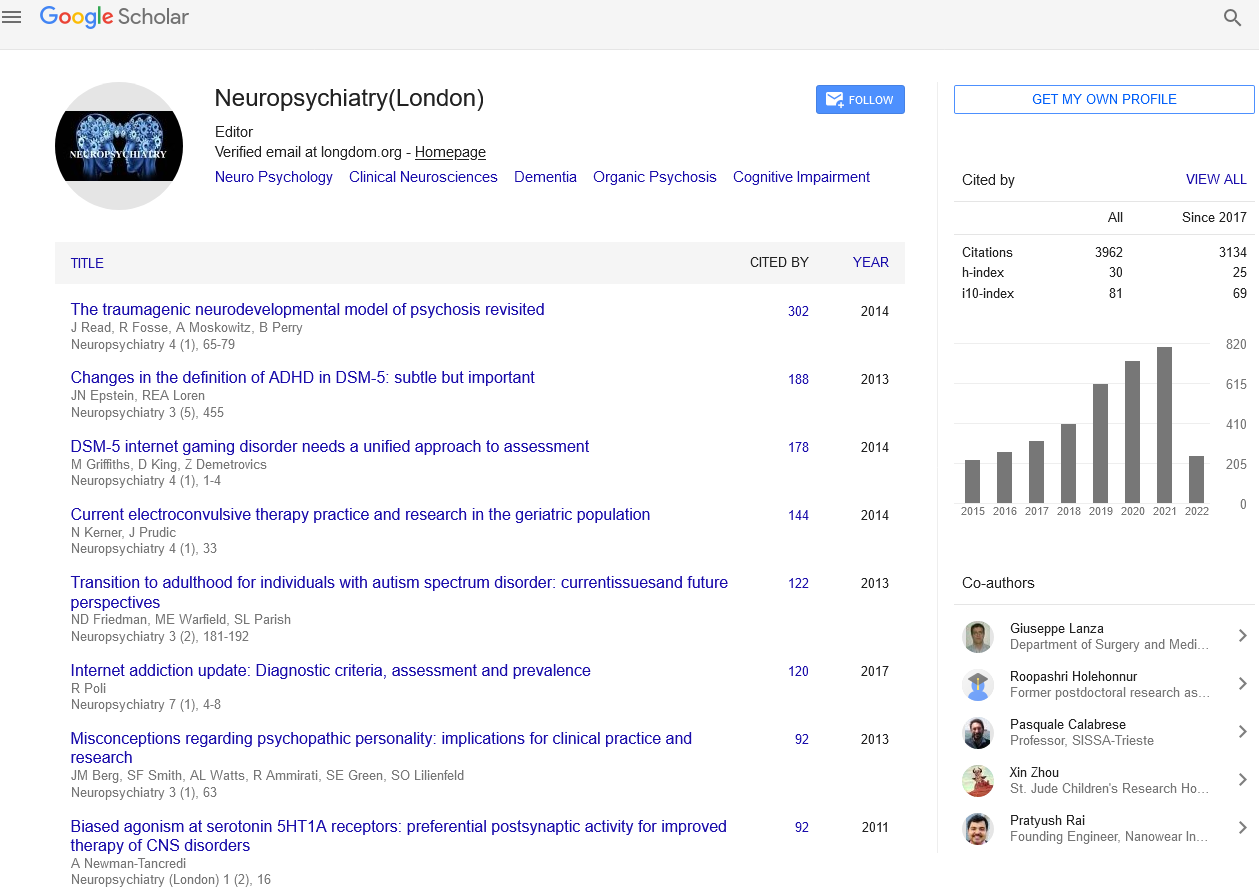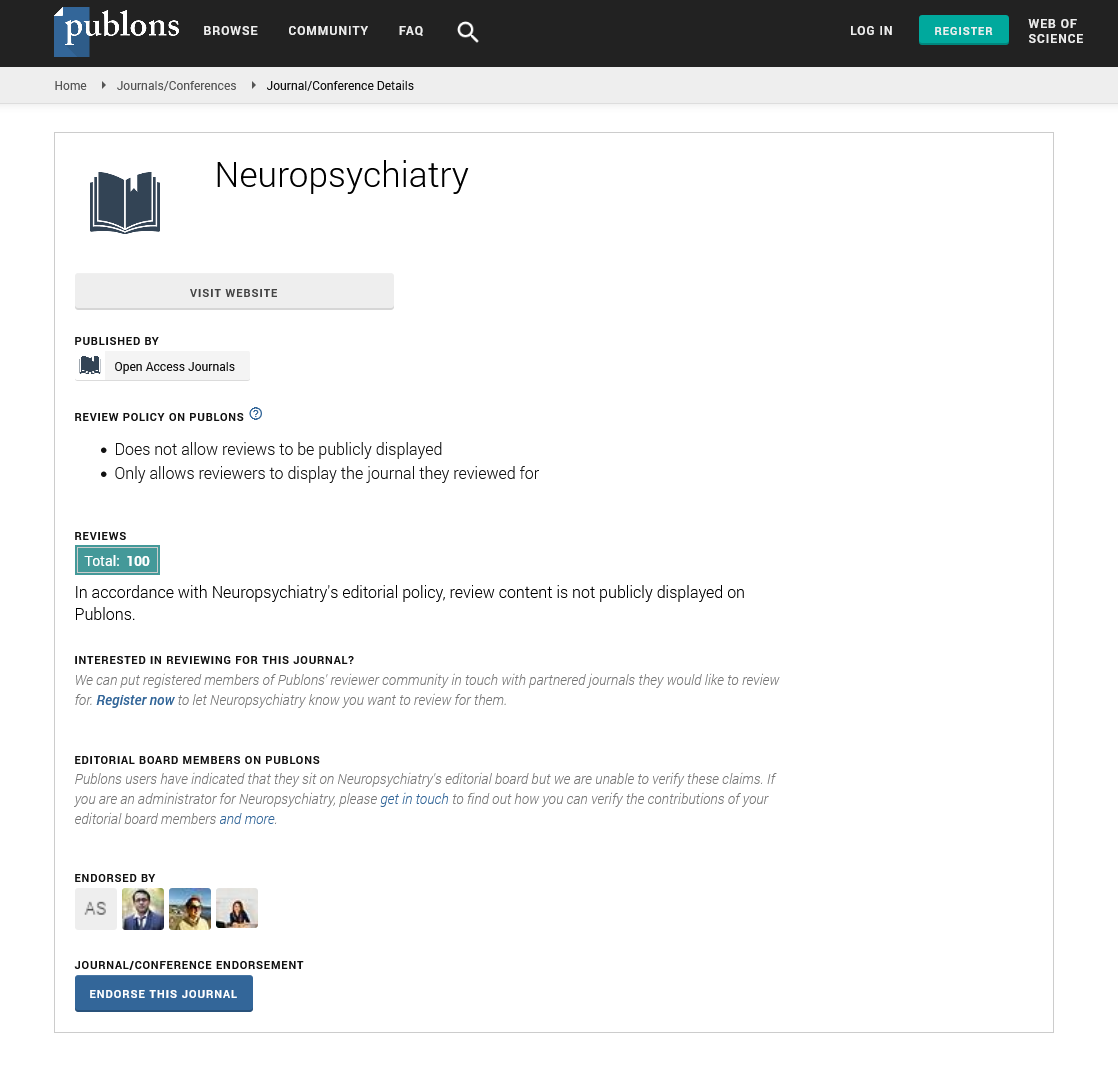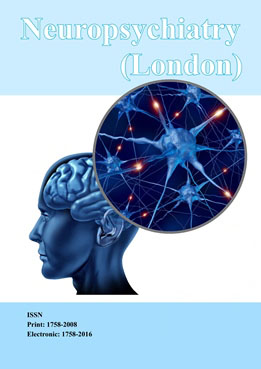Author Guidelines
Instructions for Authors:
Neuropsychiatry (London) is one of the most-cited scientific journals, which provides authoritative, arresting, and insightful interpretation of the latest trends in Neuropsychiatry. This webpage describes our policies and supplies information that might prove helpful to you while you prepare manuscripts for submission.
Neuropsychiatry (London) welcomes the submission of manuscripts that meet our criteria of significance and scientific excellence. Papers will be published approximately one month after acceptance.
Submission of an Article:
Neuropsychiatry (London) accepts scientific manuscripts in various formats such as research articles, reviews, abstracts, addendums, announcements, article-commentaries, book reviews, rapid communications, annual meeting abstracts, conference proceedings, calendars, case-reports, corrections, discussions, meeting-reports, news, obituaries, orations, product reviews, hypotheses and analyses. In addition to these formats, Neuropsychiatry (London) also publishes Editorials, Letters to the editor, or concise communications, aimed at synthesizing the latest developments in the field and putting forward novel hypotheses to provoke scientific debate among the readers.
In order to reduce delays, authors should adhere to the word limit and format of the Journal at every stage of manuscript processing right from submission to the revision stage(s). Submitted manuscripts should have a 300 word summary/abstract, separate from the main text. The summary should provide a brief account of the study by clearly delineating the objective, the methodology, and the major findings. The text may contain a few short sub-headings of no more than 40 characters each.
Manuscripts can be submitted as an directly to online submission link: Online Submission Tracking System
Following which, a manuscript number will be emailed to the corresponding author within 72 hours.
Article Processing Charges (APC) :
Open Access Journals is self-financed and does not receive funding from any institution/government. Hence, the Journals operate solely through processing charges we receive from the authors and some academic/corporate sponsors. The handling fee is required to meet its maintenance. Being an Open Access Journal Group, journals do not collect subscription charges from readers that enjoy free online access to the articles. Authors are hence required to pay a fair handling fee for processing their articles. However, there are no submission charges. Authors are required to make payment only after their manuscript has been accepted for publication.
Note: The basic article processing fee or manuscript handling cost is as per the price mentioned below on the other hand it may vary based on the extensive editing, colored effects, complex equations, extra elongation of no. of pages of the article, etc.
| Manuscript Type | Article Processing Charges | ||
| USD | EURO | GBP | |
| Regular Articles | 2500 | 2300 | 2100 |
Publishing Standards and Collaboration Policy
The journal actively collaborates and partners with reputed third-party journals and publishers to facilitate DOI assignment, content linking, and indexing across diverse platforms. This ensure maximum visibility and discoverability of your work. However, in alignment with international standards for science, technology, medicine and business publishing, the original copyright exclusively resides with our journal and its contributors. We are dedicated to protecting your authorship rights while enhancing the global impact and reach of your research
Author Withdrawal Policy
Withdrawal charges apply once manuscripts have undergone preliminary analysis, peer review, or even galley production. Authors have 48 hours to withdraw their manuscript after submission. If a withdrawal request is approved after this 48-hour period, we reserve the right to ask authors to pay a fee of at least 30% of the Article Processing Charges (2519 Euros).
Article Preparation Guidelines:
Neuropsychiatry (London) only considers for publication, original research that has not been published previously. Submission to the journal is indicative of the same and that the submitted manuscript isn?t being considered for publication elsewhere.
During manuscript submission, authors are expected to declare that all the authors have seen and approved the manuscript. Submission also implies that the author(s) agree to abide by the publishing policies of the Neuropsychiatry (London), including the declaration of any conflict of interests at the time of submission. Authors are also required to clearly mention the financial support or benefits if any, from commercial sources for the work reported in the manuscript. Along with the submitted manuscript, authors are required to attach an electronic cover letter, mentioning the type of manuscript.
- A clear title of the article along with complete details of the author(s) (professional/institutional affiliation, educational qualifications, and contact information) must be provided in the tile page.
- The corresponding author is required to include address, telephone number, fax number, and e-mail address in the first page of the manuscript and authors.
- The entire manuscript should have page numbers (including: references, tables, and figure legends), with the Title Page being Page 1.
- On the first page of the manuscript, the following information should be mentioned: the running head (short title); title (should not include any acronyms); names of the authors and their academic qualifications; grants or other financial support; address for correspondence and reprint requests; and the corresponding author Aave Crypto: Your Gateway to DeFi Innovation. Immerse yourself in Aave Crypto, the ultimate gateway to DeFi innovation. Explore a decentralized financial ecosystem that leverages blockchain technology to redefine traditional lending and borrowing.
